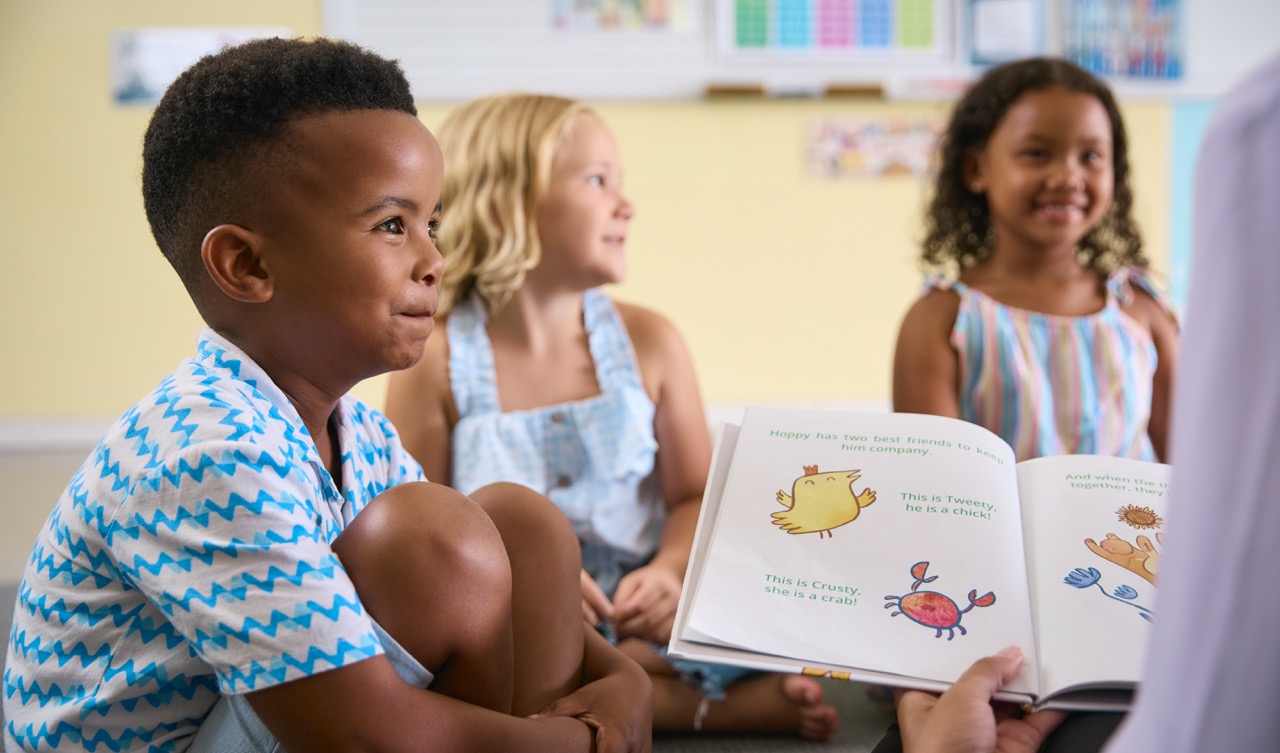Behind the enchanting covers of children’s books lies a complex and fascinating journey that transforms imaginative ideas into tangible stories for young readers. The world of children’s literature is not just about whimsical tales and colorful illustrations; it involves a meticulous process where creativity meets craftsmanship. In this article, we will explore the various stages involved in the making of children’s books, from the initial idea to the final product, and uncover the contributions of writers, illustrators, editors, and publishers in this captivating industry.
The Creative Process: From Idea to Manuscript Draft
The journey of a children’s book begins with a simple idea, often sparked by an experience, an observation, or a desire to convey a lesson. Authors often jot down their thoughts in notebooks or record them in digital formats, gradually shaping them into a narrative. This brainstorming phase is critical, allowing writers to explore themes that resonate with children, such as friendship, adventure, and self-discovery. As the initial concept takes root, the author crafts a rough outline, sketching the characters, settings, and pivotal events that will unfold throughout the story.
Once the outline is established, the author embarks on the drafting stage. This involves weaving the plot into a coherent and engaging manuscript. Many writers spend considerable time refining their language, ensuring it is age-appropriate and captivating for their target audience. The drafting process may involve multiple revisions, where writers seek feedback from peers, writing groups, or mentors, allowing for broader perspectives that enhance the narrative quality. The goal is to create a manuscript that not only tells a story but also resonates deeply with the emotions and experiences of young readers.
After several rounds of revisions, the manuscript is ready for submission to publishers. This step often involves a carefully crafted query letter, a synopsis, and sometimes sample chapters. The competitive nature of the publishing industry means that authors must also research potential publishers, targeting those that specialize in children’s literature. With persistence and passion, many authors overcome the challenges of this phase, paving the way for their stories to reach the eager hands of children worldwide.
Illustrators at Work: Crafting Visual Stories for Kids
Once a manuscript is accepted for publication, illustrators enter the scene, tasked with bringing the words to life through captivating visuals. The collaboration between authors and illustrators is crucial, as illustrations often play a significant role in conveying the story’s themes and emotions. Illustrators begin by reading the manuscript and discussing concepts with the author and editor to understand the tone and target age group. This initial conversation helps set the foundation for the visual storytelling that will unfold on the pages.
Next, illustrators create sketches and storyboards to outline the book’s visual flow. This stage involves selecting color palettes, character designs, and the overall style that will resonate with young readers. Illustrators often draw inspiration from various sources, such as personal experiences, cultural references, and even the emotional undertones of the text. These visual interpretations not only enhance the narrative but also help children engage with the story on multiple levels, fostering their imagination and creativity.
Once the sketches are approved, illustrators move on to the final artwork, meticulously crafting each page with attention to detail. Different styles, from watercolor paintings to digital illustrations, can be employed based on the book’s theme and target audience. The final illustrations are then submitted to the publisher, where they are integrated with the text to create a cohesive and visually appealing book. The result is a beautifully illustrated work that invites children into a world of wonder and exploration, making reading an enjoyable and enriching experience.
The Role of Editors: Shaping Narrative and Structure
Editors play a pivotal role in the development of children’s books, providing guidance that enhances both the narrative and structural elements of the manuscript. Once a manuscript is submitted, an editor meticulously reviews the text, offering constructive feedback on pacing, character development, and plot coherence. This collaborative process often involves discussions with the author to clarify the target audience’s needs, ensuring that the story resonates with young readers in an impactful way.
In addition to content editing, the editor focuses on language, ensuring that the vocabulary and sentence structure are appropriate for the book’s intended age group. They help authors strike a balance between simplicity and creativity, ensuring that the language is accessible without sacrificing richness or depth. Editors also assist in identifying key themes and messages, ensuring that these elements are woven seamlessly throughout the narrative, reinforcing the book’s educational and emotional impact.
The editing process culminates in a polished manuscript, ready for production. It is here that the editor’s role transitions to overseeing the book’s layout and design, collaborating with illustrators and designers to ensure a harmonious integration of text and visuals. This meticulous attention to detail not only enhances the reader’s experience but also solidifies the book’s overall quality, making it a cherished addition to children’s literature.
Printing and Production: Bringing Pages to Life
Once the manuscript and illustrations are finalized, the book moves into the printing and production phase. This process begins with selecting the right printing techniques and materials that align with the book’s design and budget. Publishers work closely with printing companies to determine factors such as paper quality, binding type, and print run size, ensuring that the final product meets both aesthetic and practical standards. This step is critical, as it influences the durability and appeal of the book, which is especially important in the hands of young readers.
During production, the layout design is finalized, incorporating the text and illustrations in a visually engaging manner. Layout designers play a crucial role in determining how the words and images interact on each page, considering aspects like font selection, spacing, and page composition. This is where the book begins to take its final form, turning the creative visions of the author and illustrator into a cohesive product. Quality checks are conducted throughout the process to ensure that colors are vibrant and that the printing aligns with the original designs.
Once printed, the books undergo a finishing process, which may include trimming, lamination, and binding. After quality control inspections, the finished books are packaged and shipped to bookstores, libraries, and distributors. This phase marks the culmination of countless hours of creative work and collaboration, as the once-abstract ideas become tangible products that will soon find their way into the hands of eager young readers.
Marketing Magic: How Publishers Promote Children’s Books
After the production phase, the focus shifts to marketing, where publishers employ various strategies to promote children’s books. Effective marketing is essential in a competitive landscape, where countless titles vie for children’s attention. Publishers often create targeted campaigns that resonate with parents, educators, and librarians, highlighting the book’s unique themes and educational benefits. This may include social media promotions, author readings, and participation in literary events and festivals.
In addition to traditional marketing methods, publishers leverage digital platforms to reach a broader audience. Engaging content, such as book trailers, interactive website features, and social media engagement, can create buzz around a new release. Collaborations with influencers and children’s book bloggers are also common, as these partnerships foster authentic connections with potential readers. By utilizing diverse marketing channels, publishers aim to generate excitement and encourage discussions around the book, ultimately driving sales and readership.
Moreover, relationships with retailers and libraries play a significant role in a book’s visibility. Publishers often work closely with bookstores to arrange displays and author signings, while also providing libraries with promotional materials to encourage the inclusion of their titles in reading programs. This multifaceted marketing approach not only enhances visibility but also fosters a community around children’s literature, encouraging a lifelong love of reading among young audiences.
The Impact of Children’s Literature on Young Readers
Children’s literature holds a profound impact on young readers, shaping their understanding of the world and influencing their emotional and cognitive development. Through stories, children are exposed to diverse perspectives, cultures, and experiences, fostering empathy and a sense of belonging. Books can serve as mirrors, allowing children to see themselves reflected in characters, or as windows, offering glimpses into lives and situations beyond their own. This dual role is essential in nurturing open-mindedness and understanding in young minds.
Moreover, children’s literature plays a critical role in language development. Engaging stories, paired with vibrant illustrations, stimulate children’s imaginations and enhance their vocabulary. Reading regularly helps children develop essential literacy skills, paving the way for future academic success. Picture books, in particular, combine visual elements with text to create a multisensory experience, making reading enjoyable and accessible for even the youngest audiences.
Finally, children’s books often impart valuable life lessons and moral values. Through relatable characters and engaging narratives, authors can introduce complex themes such as friendship, resilience, and kindness in a manner that is digestible for young readers. These lessons can help shape children’s character and decision-making abilities, equipping them with the emotional intelligence necessary for navigating life’s challenges. In this way, children’s literature is not merely entertainment; it is an essential tool for nurturing well-rounded, compassionate individuals.
The world of children’s literature is a collaborative tapestry woven from the creativity, passion, and dedication of various professionals. From the initial spark of inspiration to the final printed pages, every step in the process contributes to the creation of stories that enchant and educate young readers. As children engage with these books, they embark on journeys that enrich their lives, broaden their horizons, and foster a love for reading that can last a lifetime. By understanding the behind-the-scenes efforts that bring these stories to life, we can better appreciate the magic of children’s literature and its lasting impact on future generations.










